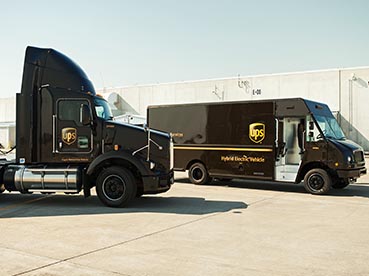“Shipping profile? Check. We received it from our carrier representative at our last account review.”
No, really. Do you know what your shipping profile actually looked like last year? Has it remained consistent in 2018? Is your shipping profile expected to be similar in 2019? What about 2020?
Elements of your shipping profile may change twice by 2020 thanks to the carriers’annual General Rate Increase (GRI).
What about your carrier agreement? Was it negotiated with your shipping profile in mind? We’ll accurately answer that for you, and without even needing your response. That’s because the carriers understand your shipping profile, and they absolutely use their data-driven analytics machine to ensure that your “unique” discounts and terms maintain their strong profit margins.
Do you have a data-driven analytics machine? Even if you wanted to utilize a data-driven approach to understanding and resolving your parcel pain, do you really want to invest the time and resources to building the necessary structure to do so?
Understanding your shipping profile is a key element of strategic planning. From financial forecasting and procuring raw materials to your customers’ experience, your shipping profile likely impacts more facets of your business than you even realize!
What’s In Your Shipping Profile?
So, what is typically meant by your “shipping profile?” Simply, your shipping profile classifies the characteristics of your shipments and identifies trends within those shipments.
What is not so simple is identifying and translating the millions of meaningful data points within carriers’ invoices, pricing agreements, and service guides to construct that shipping profile. Service types, package weights, package dimensions, pick-up location(s), delivery location(s), as well as other specific shipment characteristics the carriers target by leveraging steep surcharges are all common elements of a business’ shipping profile. For business shippers, this significantly complicates the challenge of identifying and organizing—not to mention making sense of—how the elements of the shipping profile interact with and impact one another.
While a shipping profile delivers descriptive data, most shippers are mainly interested in reducing costs and implementing operational efficiencies. In order to do that, shippers need to utilize data science methodologies to conduct predictive and prescriptive shipping analytics. Since most shippers focus their time and resources on areas of their business out of necessity, they are left to trust carriers like UPS and FedEx to identify and resolve shipping behaviors that are specifically causing the shipper parcel pain.
Understanding the shipping profile is critical to an organization’s ability to operate efficiently and effectively. It’s shocking to learn over the years how many shippers attempt to negotiate their own parcel shipping rates and terms without a complete understanding of their shipping profile—like baking without a recipe or all the ingredients.
FedEx and UPS spend billions of dollars every year on their ability to use data-driven tools as their competitive edge when negotiating with shippers like you. While it’s unlikely that many shippers have the resources to invest like the carriers do, there are third-party partners committed to data driven analytics and parcel shipping that have leveled the playing field like Refund Logistics.
How Do The Carriers Use Your Info?
UPS and FedEx have a somewhat simplistic method in constructing your custom discounts and terms. No, it’s not primarily based on the size of shipper you are. While your shipment volume trend may be part of your carrier representative’s positioning when approached about reducing costs, it actually plays far less of a role than you might think.
That’s why as a shipper’s package volume increases, their pricing does not incrementally improve. With that said, you may have earned tier discounts in your carrier agreement that provide additional discount incentives based on your spend, but take a look at the downside as well as the upside.
Growth into the next volume tier and beyond is typically rewarded with a 1 to 2% discount increase, while dropping just one volume tier can result in 5 to 10% of your discount being stripped away. Unfortunately, this is common with both FedEx and UPS.
Carriers view your shipping data through more of a microscopic lens than shippers traditionally do. The carriers slice and dice the data to identify common shipment characteristics to define a shipper’s standard shipment. The carriers then model how that standard shipment will likely move through their network, and identify what are the predictive network touchpoints, which are often viewed as risks by the carriers. After the cost and risk associated with handling your shipments is determined, the carrier will consider other factors like their own network capacity, the competitive environment, potential ancillary service attachment, and the shipper’s opportunity for growth.
The complexity involved with identifying and effectively utilizing your shipping profile to drive carrier optimization, contract optimization, and operational optimization can be daunting, but shippers can no longer kick this issue down the road. The urgency to resolve this gap will only continue to grow exponentially as more and more shippers aim to minimize the rising cost of shipping.
Are you ready to start saving more on your shipping? Contact Refund Logistics today to stop leaving money on the table and start preserving your well-earned profits.
Utilize our 100% contingency based model to start saving on your shipping costs today!

